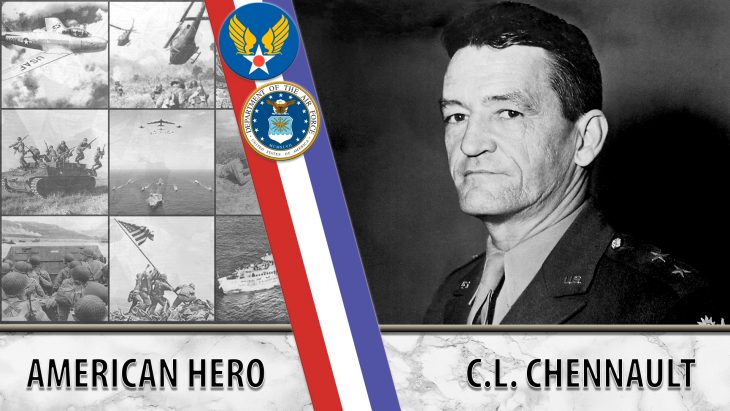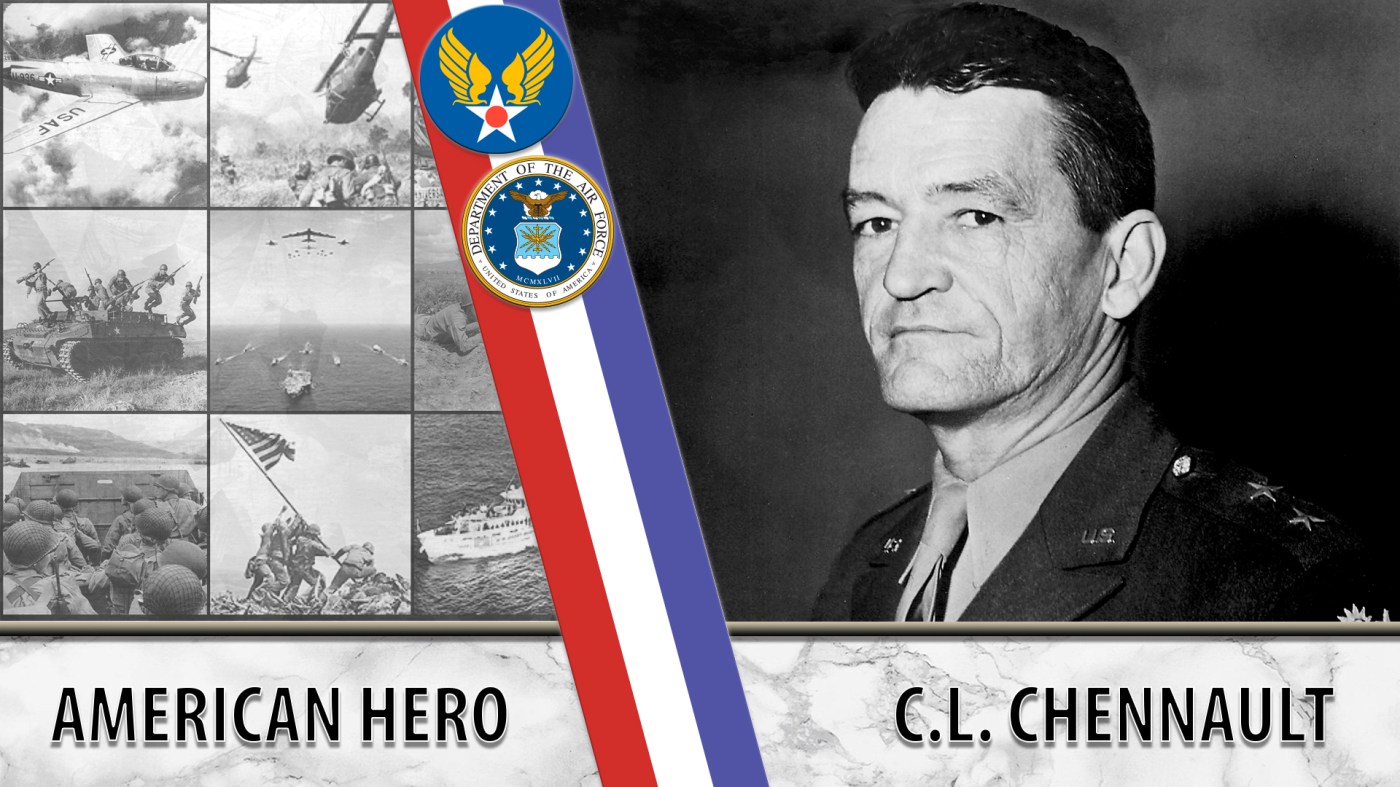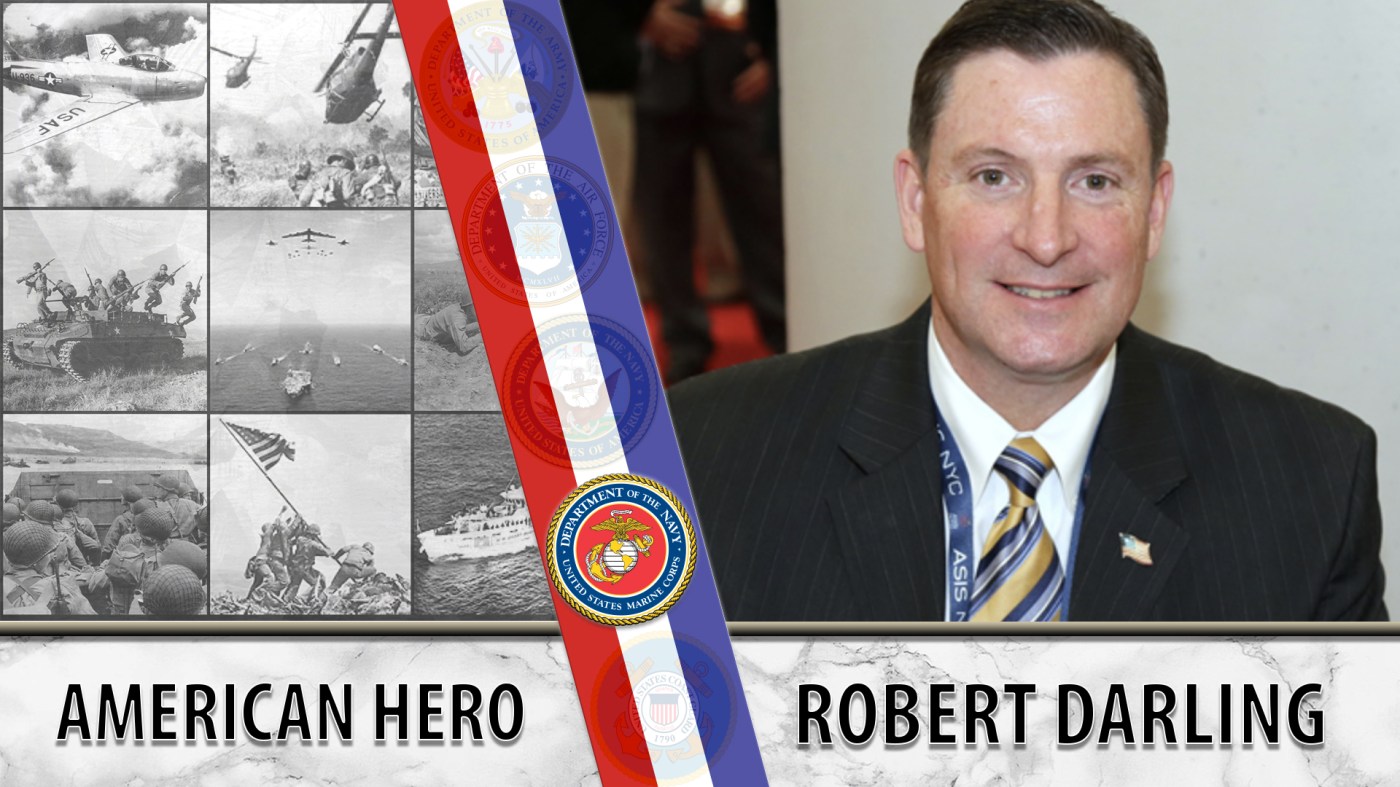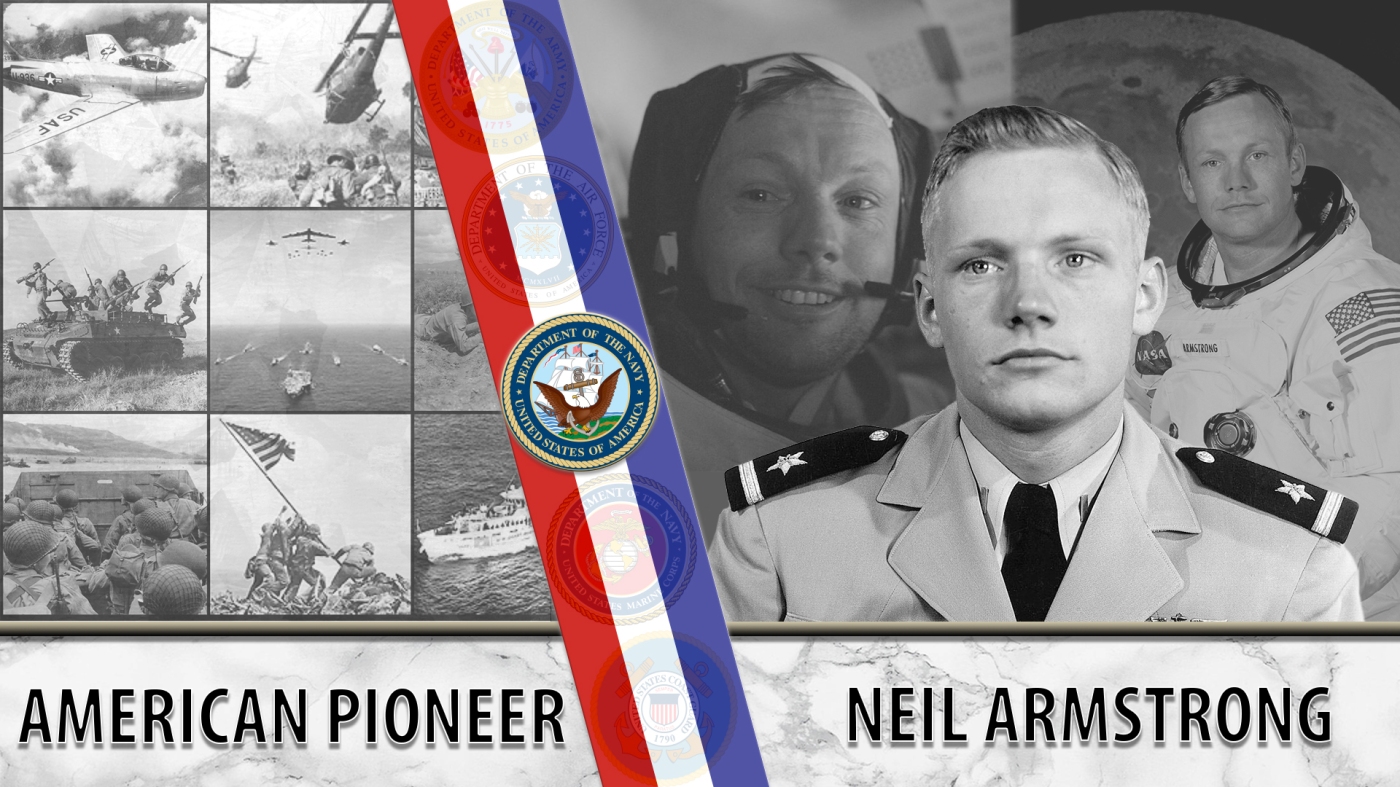
Claire Lee Chennault, a U.S. major general who commanded the U.S. Army Air Forces in China during World War II, led the First American Volunteer Group, AKA the “Flying Tigers.”
Flying over China in the 1940s, airplanes marked with shark teeth served the Chinese air force. This group of American volunteers, known as the “Flying Tigers,” served under a renowned leader of his time: Claire Lee Chennault
Born in Commerce, Texas, in 1890, Chennault grew up in Louisiana. After graduating from Louisiana State University, he was commissioned as a first lieutenant in the Army Infantry Reserves. Soon, though, he transferred to the Signal Corps Aviation Section, where he served during World War I.
After the war, Chennault served at Langley Field, Virginia, as well as at Kelly Field, Texas, where he studied aeronautical engineering. He learned to fly in 1919. He left the Reserves a year later, but commissioned into active duty service at Gerstner Field, Louisiana, as well as at Ellington Field and Fort Bliss, Texas. Beginning in September 1923, he was stationed in Hawaii for three years as the Commanding Officer of the 19th Pursuit Squadron. He spent the rest of the 1920s in Texas, where he worked as an instructor.
Chennault graduated Air Corps Tactical School in 1931 and later wrote an aviation textbook on aviation fighter tactics.
In June 1936 at Maxwell Field, where he was chief of Pursuit Training, Chennault was promoted to major. Partial deafness and disagreements with other Air Corps officers led to his retirement in 1937.
Many wars
When he left service, Chennault became an aviation advisor for China’s General Chiang Kai-shek during the Sino-Japanese War. Chennault revamped China’s aviation program, bringing in American pilots to serve as Chinese air force members.
The Chinese Air Force made Chennault a brigadier general in the summer of 1941, when he was assigned to train pursuit pilots for the First American Volunteer Group. Their missions included flying supplies and protecting Burma Road and Chongqing.
Chennault’s AVG volunteers started training in Burma in July 1941. Flying with 43 serviceable P-40B fighters and 84 former U.S. military pilots, their first combat was Dec. 20, 1941–less than two weeks after Pearl Harbor. From December 1941 to July 1942, the AVG destroyed 296 Japanese aircraft in China and Burma.
In 1942, soon after the United States declared war on Japan, Chennault returned to active duty with the Army Air Forces as a colonel–but was soon promoted to brigadier general. A few months later, the military assigned him as commanding general of the Army Air Forces in China. In March 1943, he received a promotion to major general to command the 14th Air Force in China.
During this time, Flying Tiger members flew dangerous missions over the Himalayas, known as “the Hump.” Crews defended the Chinese end of the Hump route and supported the Chinese army. In May 1943, Flying Tigers using B-24s bombed Japanese shipping off the Chinese coast. Much of the bombers’ available flying hours, however, were spent hauling their own supplies over the Hump in support of bombing missions.
Chennault remained in this role throughout World War II. He retired from service on Oct. 31, 1945, after serving a short assignment at the headquarters of the Army Air Forces.
After the wars
In 1946, after the war, Chennault established a commercial airline in China, and became president of China’s Civil Air Transport.
Throughout his military service, Chennault received multiple honors and medals, including a Distinguished Service Medal (with one Oak Leaf Cluster) and a Distinguished Flying Cross from the United States military, as well as a Chinese Order of the Celestial Banner, and an Order of the British Empire.
On July 18, 1958, the U.S. Air Force promoted Chennault to the honorary grade of lieutenant general. He died days later, on July 27, 1958.
We honor his service.
Writer: Isabel Nulter
Editor: Essence McPherson
Fact Checker: Brett Raffish
Graphics: Robert McPherson
Topics in this story
More Stories
Bernie Webber led one of the greatest Coast Guard rescues in history that was later chronicled in the book and movie, “The Finest Hours.”
As the events of 9/11 unfolded, Marine Veteran Robert Darling served as a liaison between the Pentagon and Vice President Dick Cheney in the underground bunker at the White House.
NASA astronaut Neil Armstrong was the first person to walk on the moon. He was also a seasoned Naval aviator.






Very interesting story. When I was growing up in the 50’s in Syosset New York, one of the kids in the neighborhood had a Flying Tiger’s jacket that was his uncle’s . It was a really neat jacket with painting on it.
We were kids so we never knew what it stood for. It said something about flying over the hump. Now I wish I knew more.
Chenault’s Flying Tigers activities in China were proudly displayed at the Imperial Dynasty restaurant in Hancock, CA. Unfortunately that restaurant closed it’s doors six years ago. There was a private airfield nearby, where pilots from all over would land and take a taxi to the restaurant. Many ex-fighter pilots (my father in his Beechcraft Bonanza included), would gather at that fine Chinese/French restaurant for fighter group get-togethers.